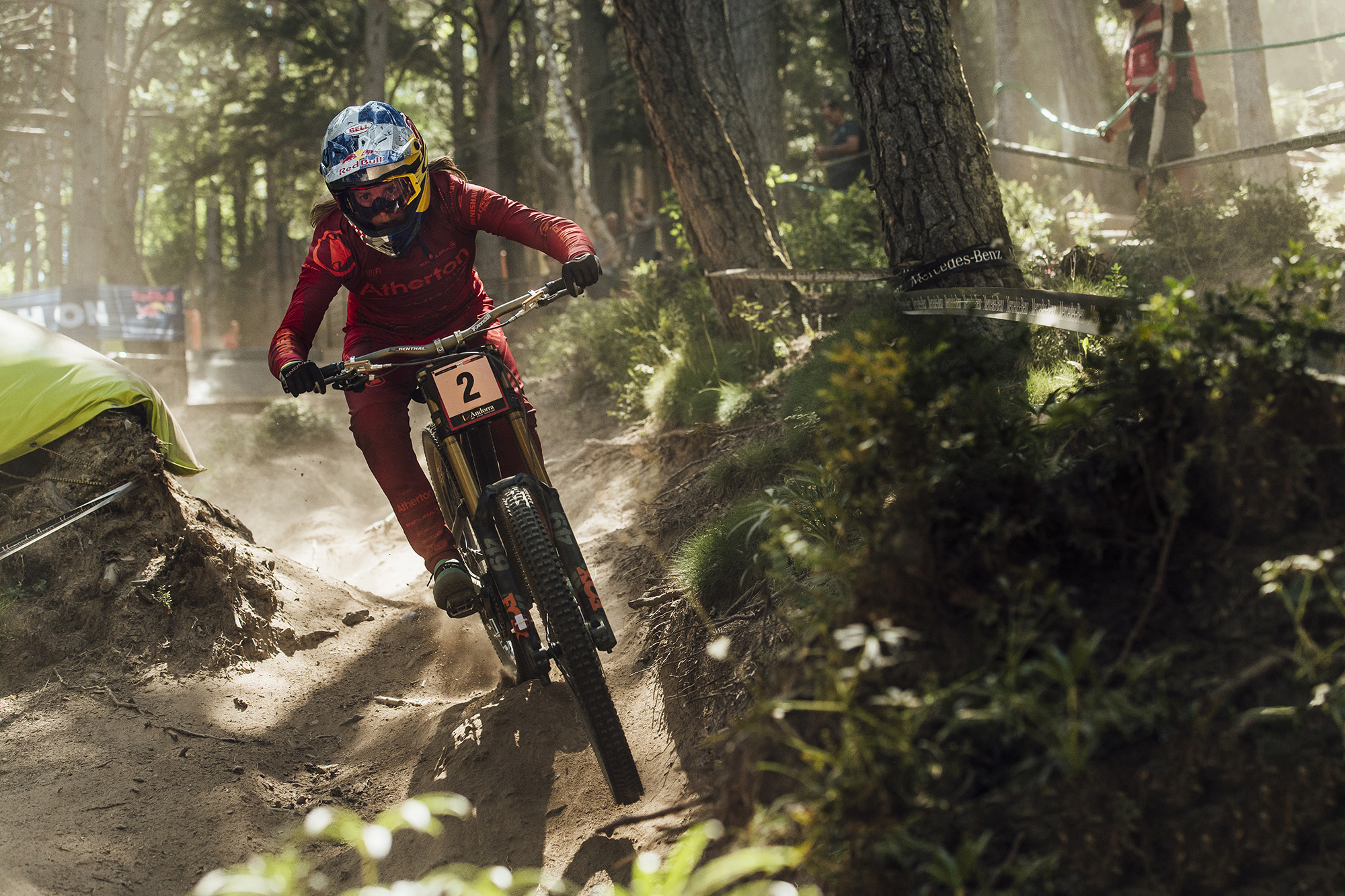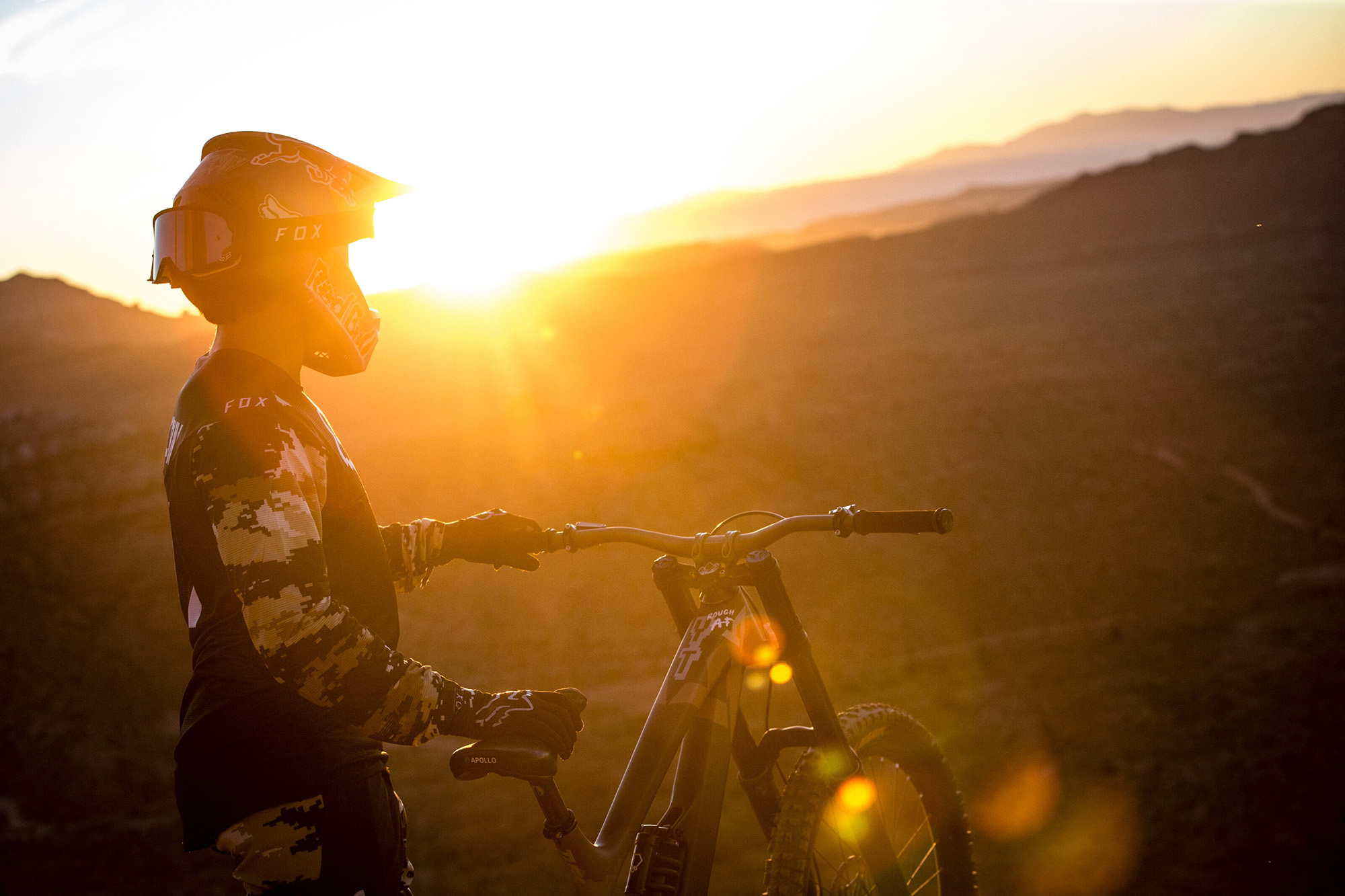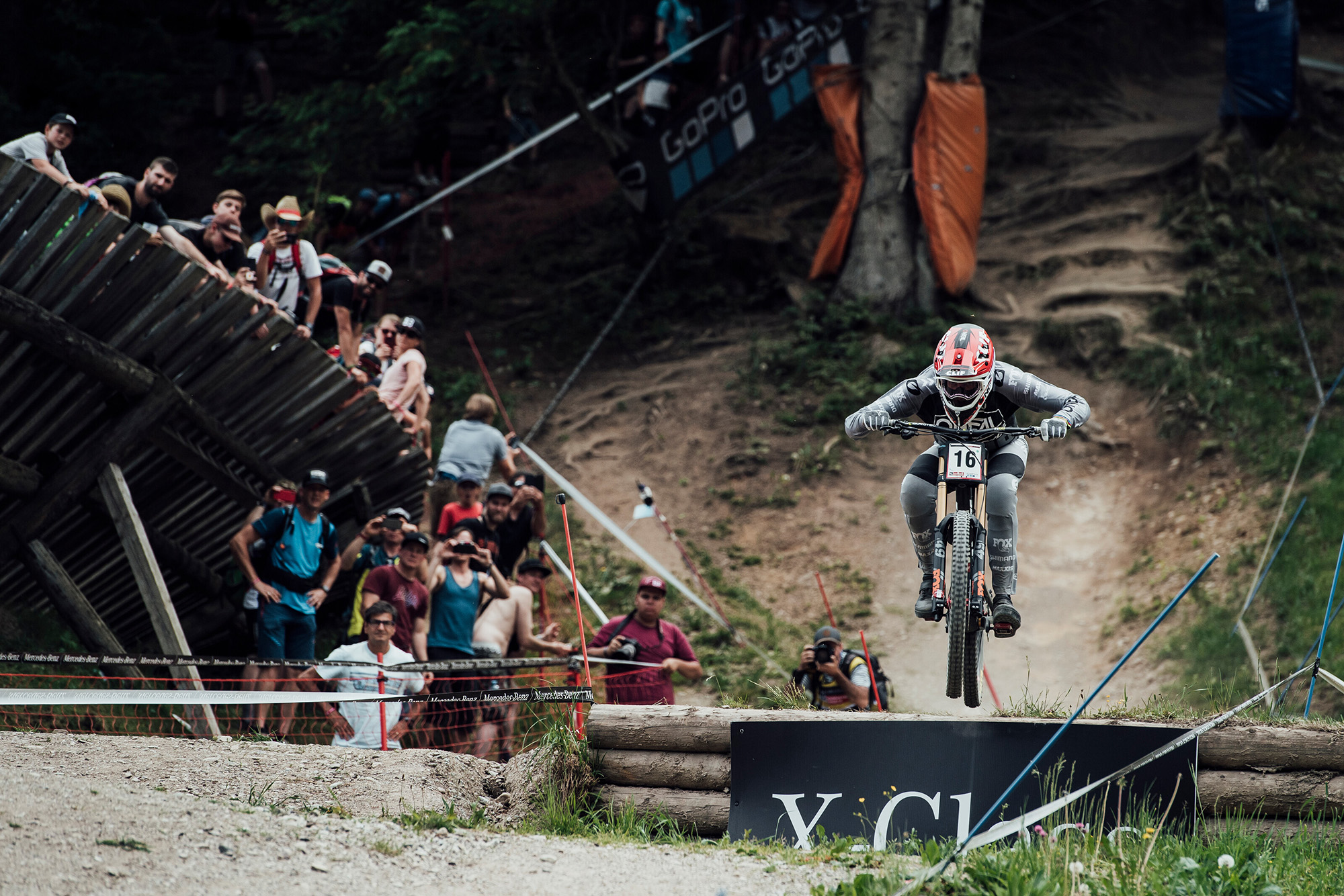Sure, it’s one of the most controversial and opinionated topics in all of mountain biking, but let’s go ahead and tackle the theory for finding your ‘perfect handlebar width’?
Story // Stephen Willson
Personally, ten years ago I would have been questioning anything wider than a 680mm bar, five years later advocating 720mm bars and more recently championing an 800mm bar. These changes in view on what is the correct bar width reflects both the changing geometry of bikes and what will help a bike sell.
But which handlebar size is the right size? Now I could say “the right size is the size you’re most comfortable with” but are any of us really going to do the necessary experimentation to truly find the most comfortable size? Probably not, it’s time consuming, hard work and arguably a lot less interesting than just going out to ride. And anyway, haven’t the bike companies already specified the right bar for us to begin with?
Let us look at some examples of bike manufacturers and their stock ‘spec’… Example ‘A’ is the current model Trek Fuel EX which arrives with a 750mm bar and 50mm stem. Now let’s look at a bike that’s been designed for the same style of rider and riding, a current model Whyte T130 which you’ll find spec’d with a slightly wider 760mm bar on the small frame size and a 780mm bar on all larger frames (all models are spec’d with a 35mm stem). So, either the Whyte’s bars are too wide or the Trek’s too narrow or the 15mm difference in stem is enough to compensate. I can’t help but wonder, aren’t we getting too much into the bike spec and forgetting about the rider? After all, just as a taller rider needs a larger frame wouldn’t a taller rider also need a wider bar?
I once read an interesting article by Richard Cunningham which promoted the idea of an optimum bar width and that the ideal width may be narrower than what you already ride. He looked at the bar width of 24 top riders and compared this to their heights.

Of the women:
- Rachel Atherton was the tallest rider standing 1700mm and she uses a 775mm bar
- Tracey Hannah stands at 1680mm and opts for 740mm bars.
- And at the opposite end of the height scale is Isabeau Courdier who stands at 1525mm and she’s running a 760mm bar
Of the men:
- Greg Minnaar was the tallest rider at 1905mm with an 800mm bar
- Amaury Pierron at 1800mm tall had an 800mm bar
- Yoann Barelli, the shortest male rider in the survey, at 1700mm rides with a 780mm bar
Lee Mc Cormack, author of Mastering Mountain Bike Skills, has taken finding the right bar width further working with REVO Physiotherapy and Sports Performance in Boulder Colorado. Lee proposes that there is an optimum bar width or ‘Sweet Spot’ that is dependent on a rider’s height and if they are a man or a woman.
He suggests that with the correct bar width you will optimise:
- Pushing and pulling the bars as you ride a pump track or trail feature. While wide bars help you push the bars down, having too wide a bar limits your ability to pull up in the second part of the pump.
- Pushing the bars forward as you drop into a technical trail feature. The wider the bar the less you can move your weight back.
- Bike lean and grip while cornering. The wider the bars the less you can lean the bike. To try this for yourself put your arms out in front of you in line with your shoulders. Now imagine the center point between your hands and maintaining the distance between them move them as far as you can to the left and right. Now repeat this with your hands further apart. You will see that the center point moves a lot less the wider your hands are apart; this equates directly to how much you can lean your bike in a corner.So, what is the optimum bar width or ‘Sweet Spot’? According to Lee and REVO this can be calculated as follows:
- For men, bar width Sweet Spot = height in mm x 0.440
- For women, bar width Sweet Spot = height in mm x 0.426
Right, so how does this work in practice? Well for me at 1696mm tall my handlebar Sweet Spot is 746mm wide (1696 x 0.440). Lee recommends a bar width between 95% and 100% of the Sweet Spot. In the last year I’ve run bars of 800mm, 780mm, 760mm, 750mm. So how did 746mm feel? It felt heaps better, most noticeably in comfort and cornering ability with an additional benefit of being better between the tight sections in the trees. In fact, I ended up with a bar width of 740mm, 99% of the Sweet Spot. And yes, that 10mm difference to the 750mm bar was noticeable.
Let us also take another real-life example. Gareth who loves testing and experimentation is 1770mm tall and has a bar Sweet Spot of 779mm, 740mm at 95% of Sweet Spot. Gareth used the calculation and tried bars narrower than the Sweet Spot and didn’t like it, he tried 750mm bars and felt sketchy, 760mm not quite right. He then tried wider bars and 800mm felt way too wide and slow steering. Gareth ended up using 770mm bars that are 99% of Sweet Spot.
 If you ride an Enduro Bike, surely you need wider bars? Trek for example spec an 820mm bar on their 2020 Remedy. Using Lee’s formula, we can see that the 820mm bar is the Sweet Spot if you are 1864mm tall (man) and 95% of the Sweet Spot if you are 1962mm tall. The key question here is do you need to be able to pump an Enduro Bike less, or need less roll over range or be able to lean it less in corners? As using a wider bar will reduce your ability as a rider to do all these things. The answer is no. Riding an Enduro bike doesn’t mean you need a bar wider than Sweet Spot as you still need to pump, drop and corner to the same extent as any other bike. However, if you ride a trail or xc bike you might consider going down to a minimum of 95% of Sweet Spot.
If you ride an Enduro Bike, surely you need wider bars? Trek for example spec an 820mm bar on their 2020 Remedy. Using Lee’s formula, we can see that the 820mm bar is the Sweet Spot if you are 1864mm tall (man) and 95% of the Sweet Spot if you are 1962mm tall. The key question here is do you need to be able to pump an Enduro Bike less, or need less roll over range or be able to lean it less in corners? As using a wider bar will reduce your ability as a rider to do all these things. The answer is no. Riding an Enduro bike doesn’t mean you need a bar wider than Sweet Spot as you still need to pump, drop and corner to the same extent as any other bike. However, if you ride a trail or xc bike you might consider going down to a minimum of 95% of Sweet Spot.
As for the Pro’s. Like any sport the Pro’s are the extreme end of the sport and you’ll see riders both over and under the Sweet Spot.
 Let’s take another look at the riders we looked at above:
Let’s take another look at the riders we looked at above:
% of Sweet Spot for the women:
- Rachel Atherton 1700mm tall, 775mm bar – 107%
- Tracey Hannah 1680mm tall, 740mm bar – 103%
- Isabeau Courdurier 1525mm tall, 760mm bar – 117%
% of Sweet Spot for the men:
- Greg Minnaar 1905mm tall, 800mm bar – 95%
- Amaury Pierron 1800mm tall, 800mm bar – 101%
- Yoann Barelli, 1700mm tall, 780mm bar – 104%
Taking the information for all twenty-four Pro riders the seven shortest riders run a bar between 103% (Tracey Hannah) and 117% of Sweet Spot (Isabeau Courdurier). The sixteen tallest riders run bars between 89% (Nino Schurter) and 97% (Martin Maes / Greg Williamson) with the exception of Danny Hart 99% and Amaury Pierron 101%. It is only Adam Bryton who’s 1730mm tall and runs 760mm bar who is using a bar at 100% of Sweet Spot.
If you have read this and you’ve decided to go and experiment with different bar widths, then that’s great. If you want to shortcut that experimentation, I suggest you go straight to Lee’s calculated Sweet Spot bar width (you can find it over at www.leelikesbikes.com). Just do this by moving a pair of lock on grips on your bar’s before committing to getting the hacksaw out to start cutting. [R]






